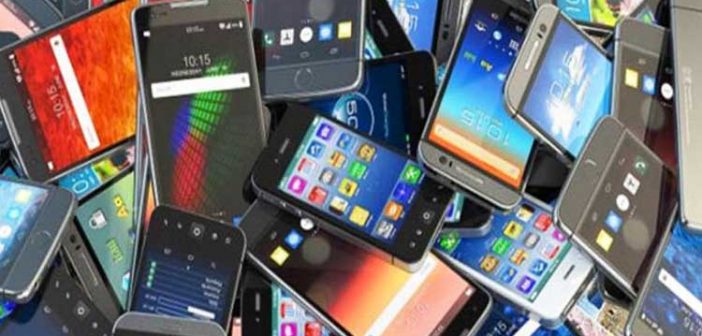Mobile phone theft in India has escalated into a severe public safety concern, with increasing incidents reflecting a troubling trend across the country. The theft of mobile phones is not just a matter of personal loss but also a burgeoning crime that affects millions of citizens, undermines public security, and challenges law enforcement agencies. This detailed analysis explores the scale of mobile phone theft, the systemic failures in tracking stolen devices, and proposes steps for improved victim protection.
The Scale of Mobile Theft in India
India, with its vast and diverse population, has witnessed a dramatic rise in mobile phone thefts in recent years. According to the National Crime Records Bureau (NCRB) data:
- 2022 Data: Reports from the NCRB indicated that over 200,000 mobile phones were reported stolen across various states in India, marking a significant increase from previous years.
- Recent Trends: In urban areas, mobile phone thefts have surged by approximately 30% annually. Cities like Delhi, Mumbai, and Bangalore are particularly affected, with theft incidents often reported as a major concern for local law enforcement.
Key Statistics:
- Delhi: Recorded over 50,000 mobile phone thefts in 2022.
- Mumbai: Over 40,000 cases reported in the same year.
- Bangalore: Approximately 25,000 theft incidents.
Why Mobile Theft Has Become a Pandemic
Several factors contribute to the proliferation of mobile phone theft in India:
1. High Value and Demand
Mobile phones, especially high-end models, are valuable and desirable items. The resale value of stolen phones often motivates thieves. With smartphones becoming essential for daily life, their market value remains high.
2. Inadequate Security Measures
Many users lack proper security measures on their devices. Weak or no passwords, absence of biometric locks, and unencrypted data make phones easy targets.
3. Urban Density and Traffic
The high density of urban areas and congested traffic conditions create ideal environments for opportunistic thieves. Crowded public spaces, such as markets and transport hubs, are hotspots for mobile theft.
4. Lack of Awareness
There is a general lack of awareness among users regarding the importance of securing their devices and reporting thefts promptly.
Failure of Law Enforcement in Tracking Stolen Mobiles
Despite technological advancements, tracking stolen mobile phones remains a significant challenge for law enforcement agencies in India:
1. Technological Limitations
The process of tracking stolen phones often relies on the cooperation of mobile service providers and the effectiveness of the tracking technology. Many stolen phones are either quickly sold off or their SIM cards are removed, complicating tracking efforts.
2. Bureaucratic Delays
The process of lodging complaints and registering thefts can be slow and cumbersome. Victims often face long waiting times and bureaucratic hurdles, which delays the recovery process.
3. Data Management Issues
Law enforcement agencies frequently struggle with managing and analyzing the vast amounts of data related to mobile thefts. This includes issues with integrating data from various sources, such as mobile service providers and police records.
4. Insufficient Training
Police personnel may lack specialized training in using advanced tracking tools and techniques, leading to inefficiencies in addressing mobile theft cases.
Steps to be Taken for Victim Protection
To address the mobile theft crisis and enhance victim protection, several measures can be implemented:
1. Enhanced Security Measures
- Public Awareness Campaigns: Educating the public on the importance of securing mobile devices with strong passwords, biometric locks, and encryption.
- Promotion of Anti-Theft Apps: Encouraging users to install and use anti-theft apps that offer features like remote locking, data wiping, and GPS tracking.
2. Improving Law Enforcement Efficiency
- Better Data Integration: Developing systems for more effective integration and analysis of theft-related data across different platforms.
- Advanced Training: Providing specialized training for police personnel on the use of tracking technologies and handling mobile theft cases.
3. Streamlining Reporting Processes
- Simplified Procedures: Streamlining the process for reporting mobile thefts to make it quicker and more efficient.
- Online Reporting Systems: Implementing or improving online platforms where victims can report thefts and track the status of their cases.
4. Collaboration with Service Providers
- Strengthened Coordination: Enhancing collaboration between law enforcement agencies and mobile service providers to facilitate quicker tracking and recovery of stolen phones.
- Database Sharing: Creating a centralized database that tracks stolen mobile phones and integrates information from service providers and police records.
Case Studies and Examples
1. Delhi Police Initiatives
The Delhi Police have introduced measures such as the “Lost Mobile Application” which allows users to report stolen phones and track them. Despite these efforts, challenges remain in implementing the system effectively and ensuring comprehensive coverage.
2. Mumbai’s Mobile Theft Task Force
Mumbai has established a task force dedicated to tackling mobile phone thefts. The task force has seen some success but continues to face difficulties due to the scale of the problem and limitations in technology.
Conclusion
The escalating problem of mobile phone theft in India presents significant challenges to public safety and law enforcement. The rise in theft incidents, coupled with failures in tracking and victim protection, underscores the need for comprehensive reforms. By enhancing security measures, improving law enforcement efficiency, streamlining reporting processes, and fostering collaboration with service providers, India can begin to address this growing crisis effectively.





